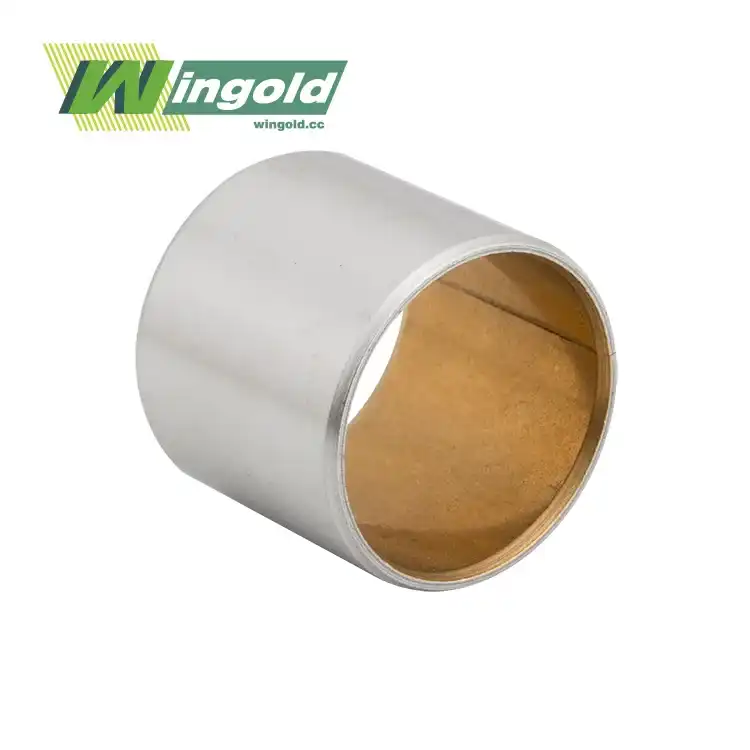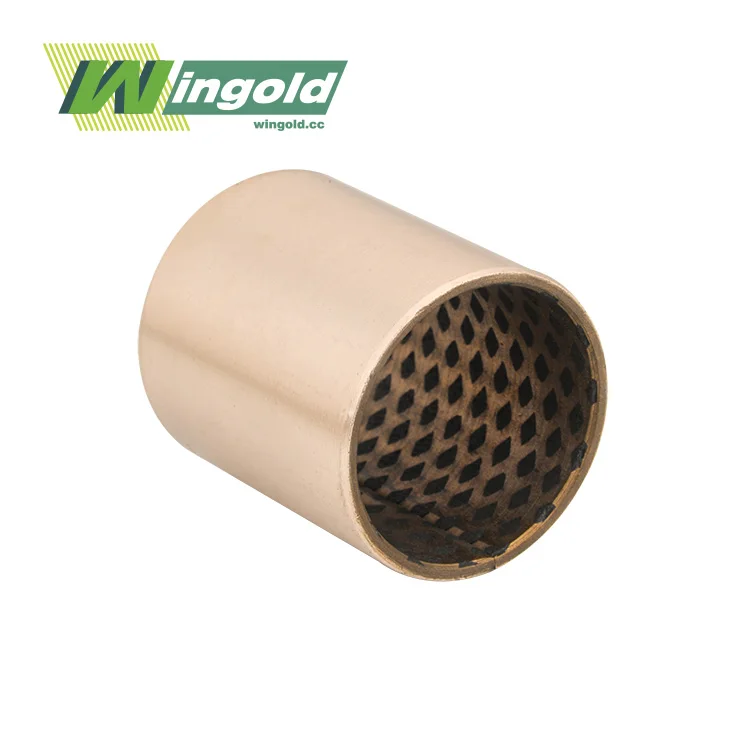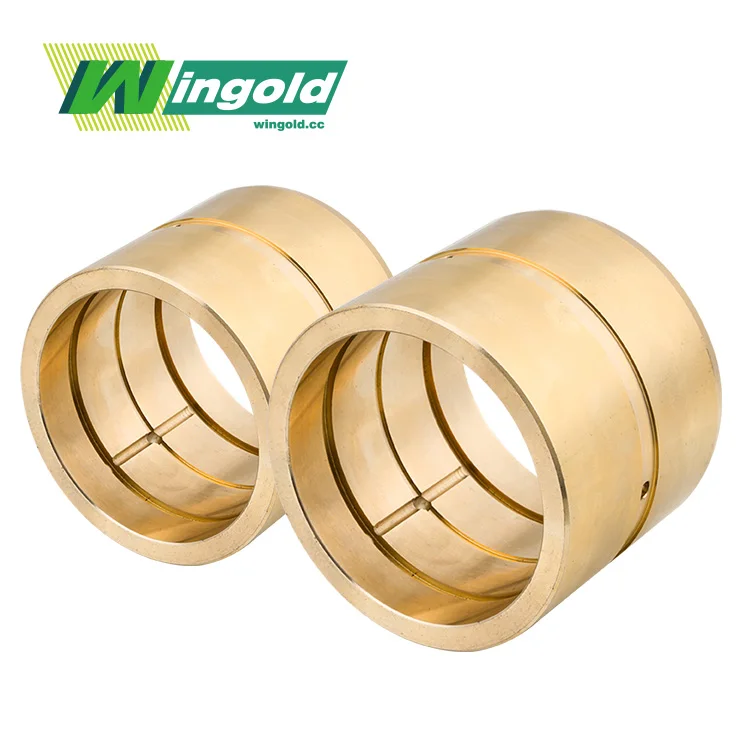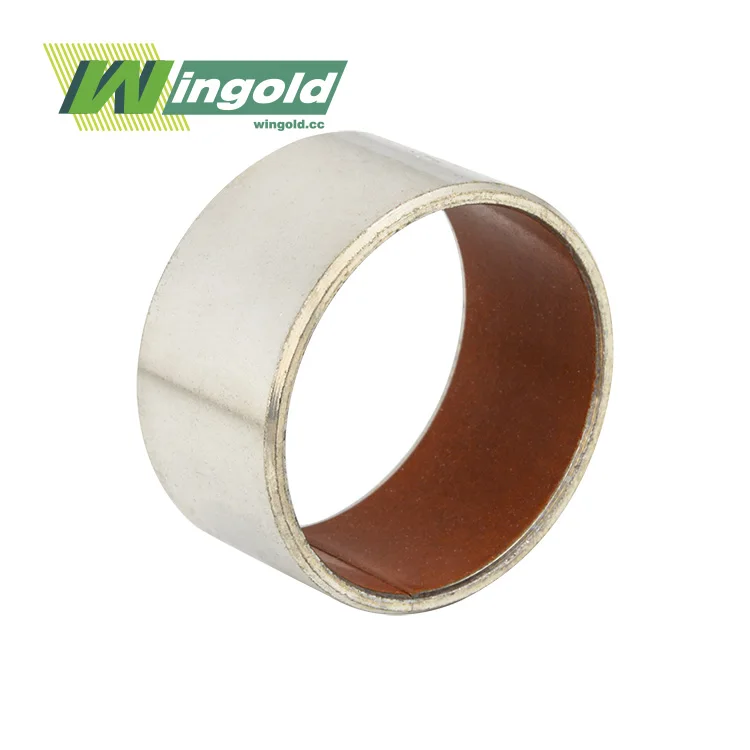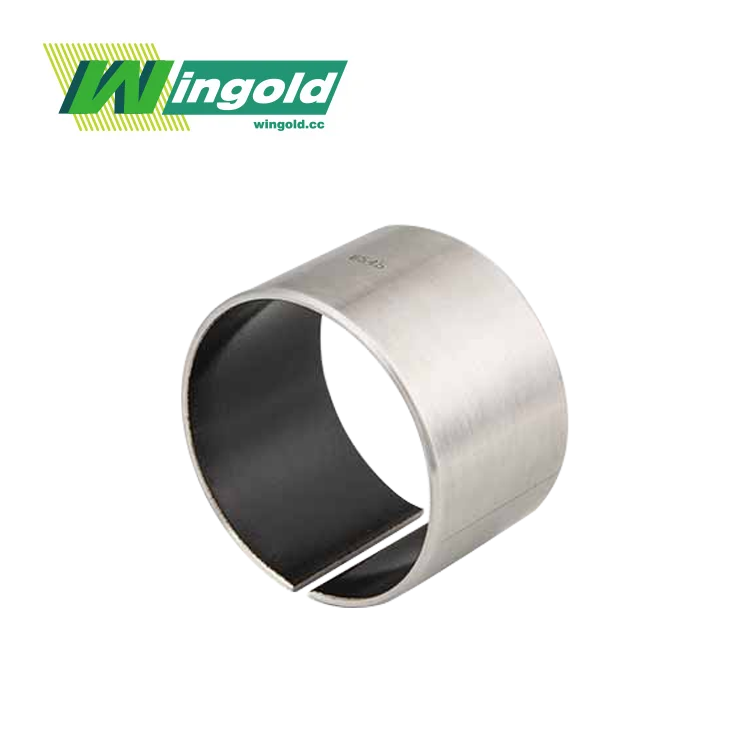Understanding Bimetallic Bushing Materials
Composition and Structure
Bimetallic bushing materials are built with exactness to meet the requesting prerequisites of high-temperature applications. These bushings ordinarily comprise of a strong steel backing that gives auxiliary quality and amazing warm dissemination properties. The internal layer, which serves as the bearing surface, is composed of specialized copper amalgams or bronze materials known for their moo grinding characteristics and wear resistance.
For instance, the WGB-800 bimetallic composite bearings utilize high-quality low-carbon steel as the base material. The surface is then sintered with copper alloys such as CuPb10Sn10, CuPb6Sn6Zn3, CuPb24Sn4, CuPb30, AlSn20Cu, or CuSn8Ni. These alloys form a wear-resistant layer that significantly enhances the bearing's performance under extreme conditions.
Manufacturing Process
The generation of bimetallic bushing materials includes advanced fabricating methods to guarantee ideal holding between the steel backing and the amalgam layer. Auxiliary sintering and auxiliary expulsion forms are utilized to accomplish prevalent holding quality and maximize load-bearing capacity. This fastidious approach comes about in a item that can withstand the rigors of high-temperature situations whereas keeping up its basic keenness and execution characteristics.
Customization Options
One of the key advantages of bimetallic bushing materials is their adaptability to specific application requirements. The surface of the copper alloy layer can be customized with various types of oil grooves, oil holes, and other features to enhance lubrication in challenging conditions. This customization is particularly beneficial in scenarios where continuous refueling is impractical or impossible, ensuring the bushing maintains its performance even in demanding operational settings.
Benefits of Bimetallic Bushing Materials in High-Temperature Applications
Thermal Stability and Performance
Bimetallic bushing materials excel in high-temperature environments due to their unique composition. The steel backing provides excellent thermal conductivity, effectively dissipating heat and preventing localized hot spots that could compromise the bearing's performance. Simultaneously, the specialized alloy layer maintains its tribological properties even at elevated temperatures, ensuring consistent operation and reduced wear.
Load-Bearing Capacity and Durability
The innovative design of bimetallic bushings allows them to handle substantial loads while operating in high-temperature conditions. With a maximum load capacity of up to 250 MPa and the ability to function effectively in temperatures ranging from -40°C to 280°C, these bushings offer unparalleled versatility and durability. The combination of a strong steel backing and a wear-resistant alloy layer results in a product that can withstand the harsh conditions often encountered in industrial applications.
Friction Reduction and Energy Efficiency
One of the most significant advantages of bimetallic bushing materials is their ability to maintain low friction coefficients even at high temperatures. With friction coefficients ranging from 0.02 to 0.08, these bushings contribute to energy efficiency by reducing power losses due to friction. This characteristic not only enhances the overall performance of the machinery but also leads to reduced energy consumption and operational costs.
Applications and Industries Benefiting from Bimetallic Bushing Materials
Heavy Industry and Manufacturing
Bimetallic bushing materials find extensive use in heavy industrial applications where high temperatures and heavy loads are commonplace. Industries such as metallurgical machinery, forging and pressing machine tools, and plastic machinery benefit from the exceptional performance of these bushings. The ability to withstand extreme conditions while maintaining low friction and high wear resistance makes bimetallic bushings an ideal choice for critical components in these sectors.
Transportation and Automotive
The automotive and railway industries leverage bimetallic bushing materials to enhance the performance and reliability of various components. From engine bearings to suspension systems, these materials offer superior durability and reduced maintenance requirements. The self-lubricating properties of certain bimetallic bushings are particularly advantageous in applications where regular lubrication is challenging, such as in railway bogies or automotive chassis components.
Energy and Power Generation
In the energy sector, bimetallic bushing materials play a crucial role in improving the efficiency and reliability of power generation equipment. Their ability to operate in high-temperature environments makes them ideal for use in turbines, generators, and other critical machinery. The enhanced thermal stability and wear resistance of these bushings contribute to extended service life and reduced downtime, ultimately leading to improved operational efficiency in power plants.
Aerospace and Defense
The aerospace and defense industries rely on bimetallic bushing materials for applications that demand extreme performance under challenging conditions. From aircraft landing gear to missile guidance systems, these bushings provide the necessary combination of strength, low friction, and temperature resistance. The ability to customize the surface properties of bimetallic bushings allows engineers to optimize their performance for specific aerospace applications, ensuring reliability and safety in critical systems.
Conclusion
Bimetallic bushing materials represent a significant advancement in bearing technology, particularly for high-temperature applications. Their unique combination of properties, including thermal stability, load-bearing capacity, and low friction, makes them an invaluable solution across a wide range of industries. As manufacturers continue to push the boundaries of performance and efficiency, bimetallic bushings will undoubtedly play an increasingly important role in enabling next-generation machinery and equipment. For more information on how bimetallic bushing materials can benefit your specific application, please contact us at info@wingold.cc.
